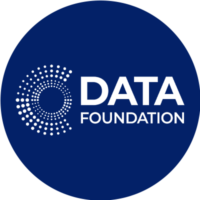
Link to report: https://datafoundation.org/news/use-cases/144/144-Using-Community-Led-Research-In-The-Fight-Against-Infectious-Diseases
This is a use case about ZTB’s innovative and inclusive data practices. It was published in Feburary 2024 by the Data Foundation, a bipartisan think tank in Washington DC, USA.
Abstract
Data can make-or-break public health programs. With deadly infectious diseases, data may determine who lives and who dies. Effective disease control is not possible without a rich picture of the landscape, informed by data. Fundamental information is needed before any intervention from public health providers, governments, or non-profit service providers can reduce disease burden.
Tuberculosis (TB) is an especially hard disease to track. TB thrives in crowded places, like shelters, schools, and prisons. TB exposure in group settings can lead to transmission and outbreaks that affect entire communities. A TB outbreak may go unnoticed and unmitigated for years because people can be contagious without demonstrating typical symptoms (subclinical TB), and the bacteria can remain dormant for years as latent TB infection before progressing to symptomatic “active disease.”
For the Tibetan refugee community in northern India and Nepal, the TB rate is up to five times higher than locallyborn peers. Since 2017, the Zero TB in Tibetan Kids & Families (ZTB) program has been using data to support disease control: tackling the data challenge by screening individuals for TB in congregate, group settings, treating those who test positive, and then leveraging the data to learn more about TB. The knowledge gained is then transferred back to the community in order to bolster the local health systems. ZTB’s impact and sustainability make it a relevant example for other health surveillance programs, including those that are designed to provide services to marginalized communities or stigmatized diseases.
This case study explains an approach to effectively gather high-quality disease surveillance data that was used to improve health outcomes and build systems capacity in one international context. The design emphasizes keeping affected communities involved throughout the process of program design, implementation, and evaluation. By centering communities and providing gathered data back to community members quickly to inform their decisions, ZTB supports a data infrastructure that better captures the spread of a very complex disease. The ZTB program provides a promising example that may be relevant for public health authorities in the United States as they adapt their disease surveillance strategies to emerging and particular contexts. The approach enables operational research, which in turn can produce robust, high-quality, generalizable, and usable evidence for how to control many types of diseases and underserved communities at home and abroad.

